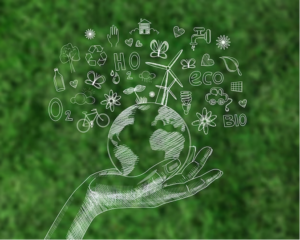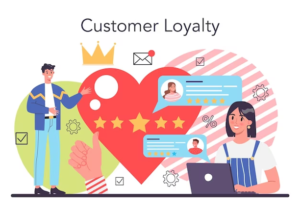The world of consumer trends is dynamic and ever-changing. As of 2023, two prominent themes have emerged, reshaping how brands engage with customers. We are talking about sustainability and personalisation.
And driving these two themes is the change in consumers, with Gen Z and Millennials at the forefront. So, if businesses want to succeed in 2023 and beyond, they must meet Gen Z and Millennials where they are by:
● Becoming sustainable
● Becoming personal (in a good way, of course!)
Sustainability: The Rise of Conscious Brands
A. Understanding the Sustainable Shift
“There must be a better way to make the things we want, a way that doesn’t spoil the sky, or the rain, or the land.” ~ Paul McCartney
Brands and businesses emerge out of the need to deliver a solution and bridge the existing market gaps. However, the solution or the product may not always be in harmony with the environment.
With increasing consumer pressure to be more active in advancing global sustainability efforts and 78% of consumers feeling that sustainability is essential, most brands are shifting towards it. They are actively trying to make their products more sustainable.
And why not? It is a wise thing to do given the shift in consumer conscience on product consumption.
For Gen Z and Millennials, today’s consumers, sustainability isn’t just a checkbox; it’s a compass guiding their purchase decisions. They like learning about what they are consuming, where it’s coming from, the process of manufacturing, and more to know the impact they make on the environment with their purchases.
In fact, individuals associate going green with positive emotions, even more positively, when these actions are personally meaningful. This becomes the intrinsic motivation to consume sustainable products, a part where brand offerings play a significant role!

B. Brands That Have Incorporated Sustainability
1. Blue Tokai
Blue Tokai Coffee Roasters is one of India’s fastest-growing coffee chains that gives tough competition to other popular coffee brands like Starbucks and Third Wave Coffee. To become more sustainable, the brand recently changed its coffee pouches from Brown Kraft packaging to 100% reusable LDPE (low-density polyethylene) pouches. The best part about using this material is the ease of recycling at recycling centers or nearby Blue Tokai Coffee café.
2. Deven Supercritical
Fashion and colours go hand-in-hand, making it difficult to imagine a colorless fashion world. Unfortunately, this creates a lot of problems. For instance, dumping leftover toxic dyes in the waterbodies and wasting tonnes of water for dyeing clothes. Thankfully, there’s Deven Supercriticals.
They have recently devised a way to dye textiles without using water called ‘SupraUno.’ It uses the already available carbon dioxide in the environment as a solvent for dyeing textiles. But the best part? You can dye various materials, including Polyester, Nylon, and Cotton, sustainably using traditional dyes.
3. Hyphen
From animal testing to plastic packaging and toxic chemicals, beauty brands and businesses leave a lasting impact that results in long-term environmental concerns.
With Hyphen, co-founders Kriti Sanon, Tarun Sharma, and others aim to deliver natural and scientific solutions that address all Indian skin concerns sustainably. For starters, the brand is PETA-certified, meaning it does not use animals for product formulations, finished products, or testing. Next, the brand is 100% Vegan and has zero plastic footprint, making it suitable for the consumers and the planet.
The Power of Personalisation
A. The Age of Customization
Personalisation is a tool that, if you get it right, can completely change how your customers feel about you! It’s no longer a nice-to-have bonus but a necessity.
Today, 73% of shoppers expect brands to understand their needs and desires. And, of course, deliver the same. According to McKinsey’s study, 76% of customers feel frustrated when companies fail to provide personalised interactions.

Unfortunately, there is a discrepancy between the percentage of brands believing that they offer personalisation (85%) and the percentage of consumers agreeing (65%). This means that brands are either failing to execute their strategy or have misunderstood what their customers want in the first place. And that is not a good sign for them. You will see why.
B. Building Stronger Customer Connections
Personalisation taps into the psychology of customers by acknowledging their individuality and preferences. It satisfies their desire for recognition and validation, creating a sense of belonging and relevance. Customers feel understood when they receive tailored recommendations or content, leading to positive emotional associations with the brand. This can trigger the reciprocity principle, where customers feel inclined to reciprocate the effort by remaining engaged and loyal.

Moreover, it simplifies decision-making, reducing cognitive load and increasing satisfaction. Thus, fostering a stronger emotional bond between customers and brands, leading to increased trust and willingness to engage.
The best way to achieve personalisation is by leveraging data and technology to gain insights into:
- individual preferences
- behaviors
- purchase history.
This data is the foundation for tailoring experiences to each customer’s needs. Furthermore, technology allows for dynamic content creation, enabling brands to deliver:
- personalised recommendations
- product suggestions
- targeted marketing messages.
Finally, automation streamlines the process, ensuring that personalisation can be scaled to a more extensive customer base.

Function of Beauty
The Function of Beauty has been around the block for quite some years. But it has only recently launched its personalized body care line. Imagine a body lotion and body wash with customized packaging and formula. Yes! You heard it right.
The brand requires you to take a small quiz, after which it formulates the products. Result? Personalized body lotion and body wash bottles with your name (or nickname) in your chosen fragrance and colour! And the best part? You can also order personalized skin care and hair care!
Convergence of Sustainability and Personalisation
The intersection of sustainability and personalisation allows brands to connect with consumers and advance environmental and individual well-being. Here’s how brands can balance these two themes:
- Utilise customer data to personalize experiences, understand their sustainability preferences, and offer eco-friendly, personalized products.
- Let customers indicate their preference for eco-friendly products or packaging during purchase. This could involve an opt-in feature that highlights sustainable choices.
- Integrate technology that allows customers to track the environmental impact of their purchases.

See Ya!
How often do we see personalization around sustainability or vice versa? Probably 1 in 100 brands! The convergence of sustainability and personalization does not mean more messages about your brand’s CSR activities. It means helping consumers feel more responsible and empowered to make a difference with your products or process.
We expect these two themes to grow bigger and converge deeper in the coming years, such that they become an integral part of brand products and processes. But now is the moment to build on these themes if you haven’t yet. Your consumers are prepared to pay a premium for sustainable items, so why not put that personalization data to good use and bring more sustainability into their lives?



